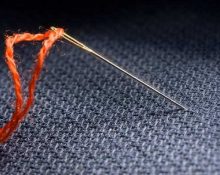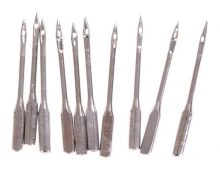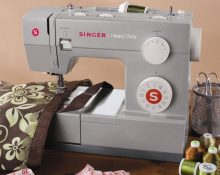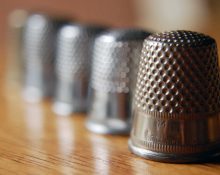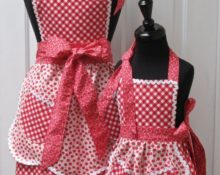Primitive people made clothes from animal skins. Yes, these were basic bandages, but even then the skin scraps were somehow fastened together. The question arises: what did primitive man use to make basic clothing for himself? Was it a needle? And when did people figure out to protect their fingers from being pricked by the point of a needle? The answers to these questions are in the article.
The history of the creation of the needle and thimble
We use these items almost every day and don’t think about how they were invented. Meanwhile, there were times when people did not know a needle and a thimble. True, a very long time ago.
What came first
Definitely needle. The first examples of products that looked similar to it appeared 15–20 thousand years ago in the territory of modern Asia and the southern part of France. The thimble appeared much later, when the sewing craft was actively developing.
History of the needle
The tools for fastening skins among primitive people were not much like modern needles:
- there was no ear;
- the needles were made from the bones of caught fish and animals; they were much thicker than usual.
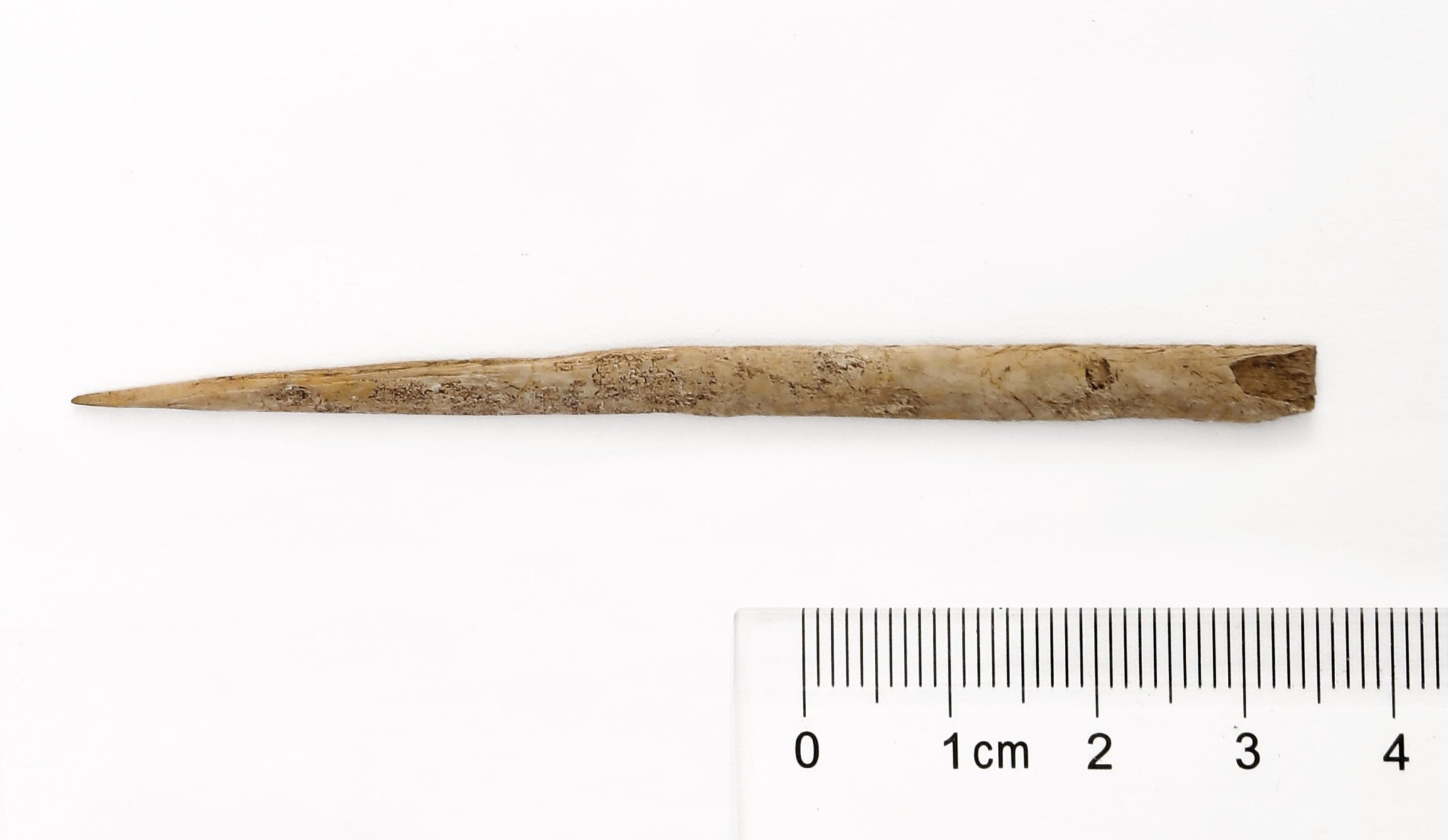
When the Bronze Age replaced the Stone Age, people learned to make metal needles. Of course, at first they were bronze. Even then these were thin instruments with a sharp end.
The first iron needles appeared in the 3rd century. There was no eye yet; the needle was a tool, one end of which was sharp and the other bent into a hook.
Interesting! The ancient Egyptians knew how to embroider. They created complex paintings on fabrics using iron needles.
European countries learned about this sewing tool in the 8th century AD. thanks to traders from Asia. Gradually, local craftsmen began making needles. Production was concentrated in Germany, Spain, and in the 16th century - in England.
During the Industrial Revolution, when new factories and factories grew by leaps and bounds, the production of sewing accessories became cheap and widespread. Since 1850, when a special machine was invented in England, needles began to be made with an eye. Since then, they have remained virtually unchanged in appearance.
History of the thimble
It is believed that the first products that looked similar to thimble, appeared in Russia. These were bone and birch bark objects that protected fingers from injury while sewing with sharp needles.
However, a cap similar to a modern thimble appeared in the 80s of the 17th century in Amsterdam. The story was beautiful: a jeweler wanted to give a friend a surprising but useful birthday gift. The lady sewed a lot, like all women of those times, so he decided to create an object that would protect her fingers during needlework. He thought for a long time what it could be, and finally made a metal thimble.
The invention was appreciated not only by the woman gifted as a jeweler, but also by other Europeans.The idea quickly became popular, and in the 18th century this simple item began to be made in England, France, Germany, and then in Russia.
Then it was not an ordinary household tool. The thimble was associated with luxury and was perceived as jewelry. It was made by hand from precious metals and stones.
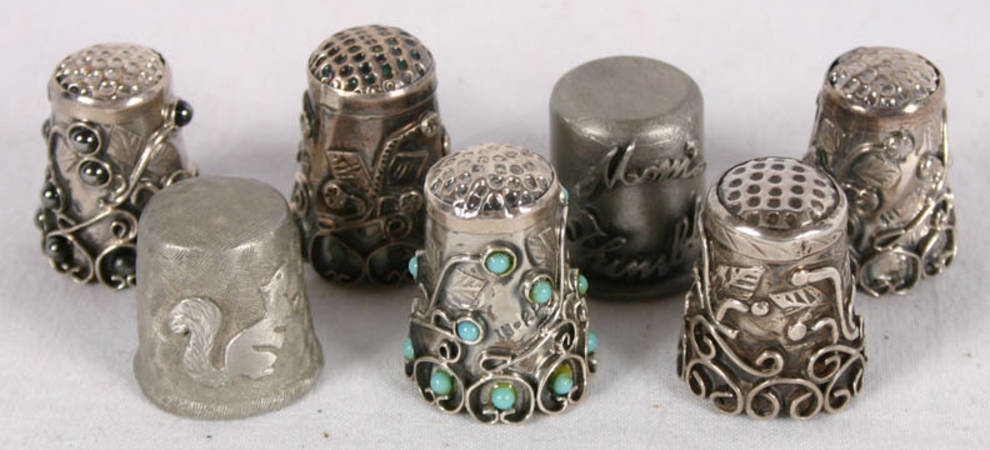
@auction.violity
In 1824, a machine for producing thimbles was invented in Germany. Since then, its mass production began. At first it was large-scale, but with the advent of the first sewing machines it decreased noticeably. However, even today the thimble is in demand among needlewomen, and it is made not only from metal, but from leather, silicone or plastic.
Important! The word “thimble” comes from the Russian “finger” - finger.
Interesting facts about the needle and thimble
There are many legends, interesting stories, and unusual facts related to both the art of sewing and the needle and thimble.
Below are a few of the most memorable:
- Until 1785, needles were almost a luxury item. Even professional tailors had no more than 2–3 of them, and simple needlewomen had at best one. They were passed down by inheritance.
- It just seems that the needle is a standard metal stick with an eye and a point. There are actually 12 needle sizes. They are also divided into sewing, embroidery and furriery. There are needles with two eyes, for the visually impaired with an eye in the form of a carabiner, with a hole in the middle. Today they are made from steel, silver, gold and platinum.
- In Japan, there has been a festival of broken needles for several hundred years. Anyone can take part in it. During the festival, the Japanese thank the broken needles for their work and put them in boxes, which are then lowered to the seabed.
- In Indochina, thimbles were used instead of wedding rings.The woman's name and the date of marriage were written on them.
- In Rus', in fist fights they used a flail that looked like a thimble. It served as a weight for the hand.
- In modern London there is a society of thimble connoisseurs. In France, the prestigious couturier competition is called the Golden Thimble. In Russia there is a similar event - “Silver Thimble”.
The amazing is nearby. Sometimes the history of familiar objects is very interesting. A needle and a thimble are direct confirmation of this.


 0
0